A knowledge management system (KMS) is a unified system designed to organize, store, and share company information efficiently.
It is widely used across industries such as customer service, healthcare, finance, education, and manufacturing.
Implementing a robust KMS ensures that employees can access accurate information, collaborate effectively, and maintain consistency in processes. It also empowers customers through a self-service knowledge base, reducing support costs and improving satisfaction.
In this blog, we’ll explore what a knowledge management system is, examples of KMS platforms, their advantages, and practical tips for building and implementing one successfully.
What is a knowledge management system (KMS)?
A knowledge management system (KMS) is a centralized platform that enables organizations to capture, organize, store, and retrieve information efficiently.
A KMS combines all distributed information onto one platform for easy access by support teams and customers.
Using knowledge management software can help keep documents up to date, assist customers in finding their own answers, and manage knowledge access and approval across support teams and departments.
What are the benefits of a knowledge management system?
By centralizing knowledge into a single platform, businesses create a structured environment that supports efficiency, collaboration, and accessibility.
Below are the key benefits of using a KMS:
- Keeps information relevant and updated: A KMS helps maintain accurate and organized content by identifying outdated articles and ensuring updates are made promptly, preventing confusion and keeping your knowledge base clean and reliable.
- Reduces time for new staff training: With all essential documents stored in one place, new employees can quickly access company policies, procedures, and best practices. This accelerates customer onboarding and helps them become productive faster.
- Enhances customer satisfaction: Support agents can easily find troubleshooting guides and past solutions, enabling quicker responses. Customers also benefit from self-service options like FAQs and help centers, reducing wait times.
- Reduces operational costs: Centralizing knowledge eliminates duplicate documents and reduces the need for multiple storage systems. This streamlined approach lowers overall operating expenses.
- Provides 24/7 customer support: A KMS powers self-service resources such as FAQs and knowledge articles, giving customers access to solutions anytime, regardless of time zones or business hours.
Types of knowledge management systems
Knowledge management systems come in various forms, each designed to organize and share information effectively within an organization. Here are the main types:
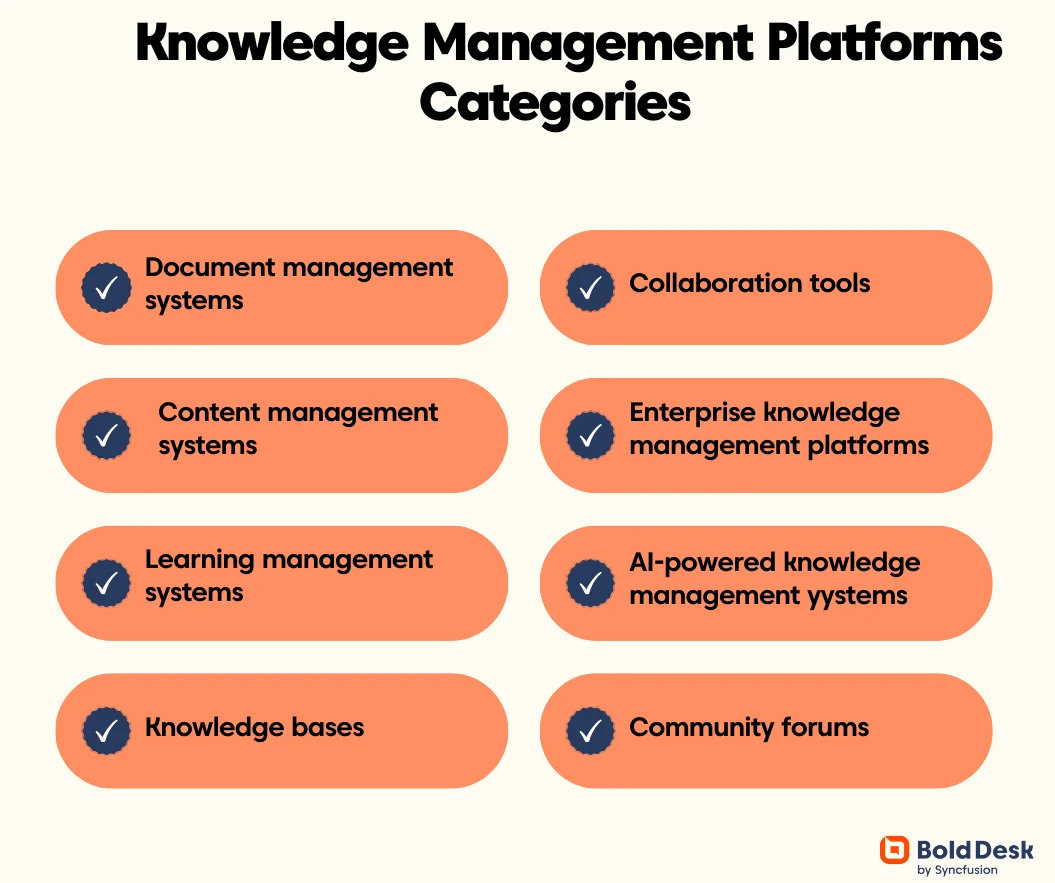
Document management systems (DMS)
A document management system (DMS) is a centralized platform that stores, organizes, and manages documents in a structured manner.
The system maintains version control, applies security protocols for access, and uses indexing and metadata to enable quick and accurate retrieval of files.
Content management systems (CMS)
A content management system (CMS) is a platform designed to create, manage, and publish digital content.
It organizes information in a consistent format, ensuring that content remains structured and easily accessible for internal portals and customer-facing knowledge bases.
Learning management systems (LMS)
A learning management system (LMS) is a platform that organizes, delivers, and tracks educational content.
It provides centralized access to learning resources and tools while integrating various components to manage courses, assessments, and user progress effectively.
Knowledge bases
A knowledge base is a self-service platform that provides centralized access to FAQs, product details, troubleshooting guides, and other essential resources for customers and support teams.
In knowledge management, it functions as a key tool for organizing and delivering information efficiently. Public knowledge bases are designed for customers through websites or portals, while internal knowledge bases support employees.
In fact a study from Higher Logic showed that if a knowledge base for self-service support was available, 92% of survey respondents of survey respondents claim they would utilize it.
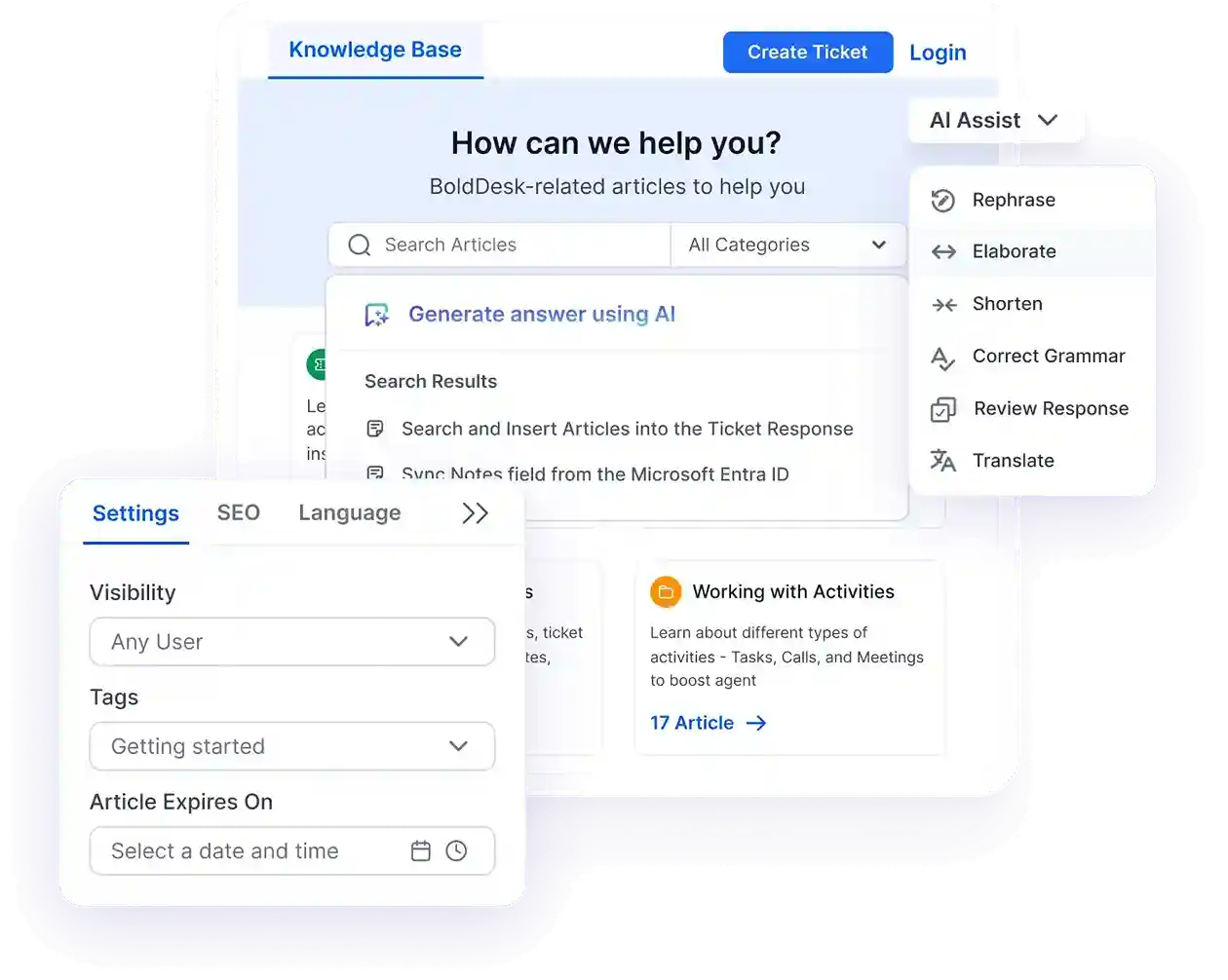
Collaboration tools
Collaboration tools are platforms that enable real-time communication and teamwork, such as Microsoft Teams or Slack. In the context of knowledge management, they enhance information exchange by making it faster, more interactive, and easily accessible.
These tools allow teams to share ideas, documents, and updates instantly, ensuring that knowledge flows seamlessly across the organization and fostering a culture of collaboration.
Enterprise knowledge management platforms
Enterprise knowledge management platforms are comprehensive solutions that bring together multiple functions, such as document storage or analytics, into a single system.
Designed for large organizations, these platforms streamline the management of vast amounts of data, making it easier to capture, organize, and share knowledge across departments while ensuring scalability and efficiency.
AI-powered knowledge management systems
AI-powered knowledge management systems leverage artificial intelligence to automate and optimize key processes. They categorize content intelligently, recommend relevant resources, and enable natural language search for faster, more accurate information retrieval.

Community forums
An online community forum is a digital platform on a company’s website that enables customers to communicate, collaborate, ask questions, share information, get quick help from the support team, and develop relationships in a virtual environment.
These forums function as tools where customers can respond to each other’s queries and solve problems, sometimes faster than the support team can respond.
How to build a knowledge management system and implement it
Integrating a knowledge management system (KMS) requires more than just technology; it involves creating a structured approach to capturing and organizing information so it can be easily accessed and used across the organization.
To make your knowledge management software successful, follow these best practices:
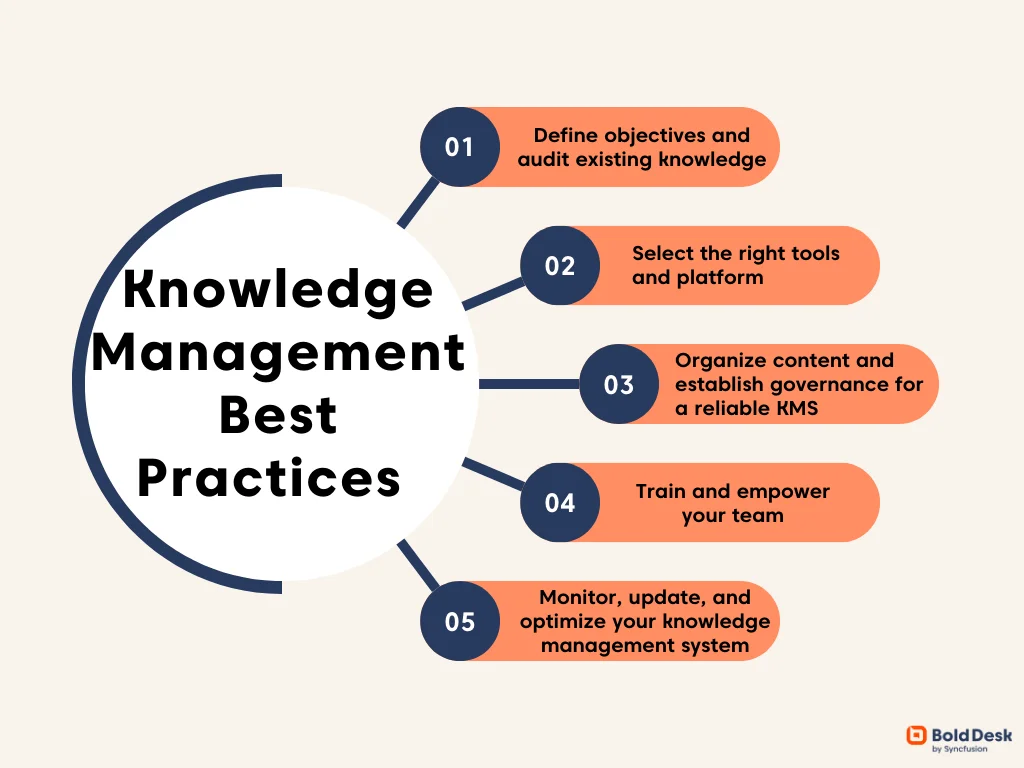
1. Define objectives and audit existing knowledge
A well-structured knowledge base is the backbone of efficiency. Start strong, and everything else falls into place.
Start by laying a strong foundation for your knowledge management system with these steps:
- Define clear objectives by identifying the problems you want to solve, such as reducing repetitive queries or enhancing customer self-service, and document these goals to guide implementation.
- Audit existing knowledge assets by reviewing FAQs, manuals, and SOPs for accuracy, completeness, and duplication.
- Remove outdated content, eliminate redundancies, and identify gaps to ensure a clean, reliable knowledge base.
2. Select the right tools and platform
Choosing the right platform is the foundation of a successful knowledge management system. Your tool should not only meet current customer needs but also scale with your business.
When evaluating options, prioritize these key features:
- Implement an AI-powered search engine to understand context, synonyms, and intent. This ensures users find accurate answers quickly and effortlessly.
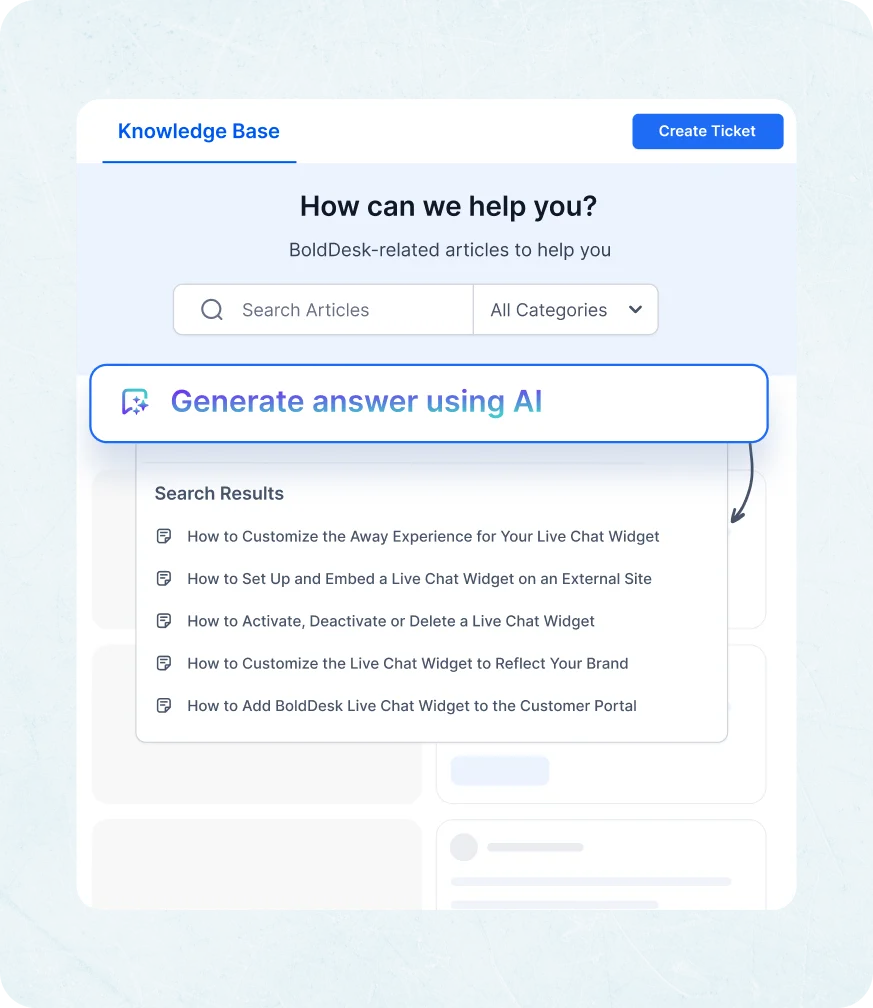
- Select a platform that integrates smoothly with your existing tools, contact management (CRM), helpdesk, and collaboration apps.
- Choose a solution that supports future growth, including multilingual customer support and advanced customization.
3. Organize content and establish governance for a reliable KMS
A well-structured knowledge base is the backbone of an effective knowledge management system (KMS). Proper organization ensures users can quickly find answers, while strong governance builds customer trust and maintains accuracy. To implement these:
- Group related topics using categories and tags to make navigation intuitive and help users quickly locate information.
- Apply consistent templates across all articles to maintain clarity, professionalism, and a uniform user experience.
- Define access controls to specify who can view, edit, or publish content, ensuring sensitive information remains protected.
4. Train and empower your team
Technology alone won’t guarantee success; your employees make it work. Here’s how:
- Equip your team with the skills and confidence to use the KMS effectively.
- Encourage a culture of knowledge sharing where employees contribute insights and best practices to keep the system dynamic and valuable.
- Train content creators on best practices for writing clear, concise, and actionable articles that meet customer needs.
- Teach end-users how to navigate and search the knowledge base efficiently so they can quickly find the information they need and feel confident using the system.
5. Monitor, update, and optimize your knowledge management system
Your knowledge management system (KMS) isn’t a one-time project; it’s a living resource that needs regular attention to stay accurate and useful.
- Use analytics to guide updates by reviewing the most viewed articles to replicate successful formats, identifying search queries with no results to fill content gaps, and tracking engagement trends to improve navigation and usability.
- Schedule regular content reviews to refresh outdated information and ensure accuracy across all resources.
- Establish feedback loops to gather input from users and optimize article quality for better relevance and clarity.
Knowledge management system examples
Businesses today run on information. But without a system to organize and share that knowledge, teams can waste time searching for answers or repeating work.
To show how this works in practice, here are some real-world examples of companies and tools using knowledge management system software effectively.
Tableau: Empowering business intelligence with knowledge management
Tableau, a leading data visualization and analytics platform, offers a robust knowledge base as part of its customer support ecosystem.
This knowledge base provides detailed product documentation, troubleshooting guides, and FAQs, enabling users to resolve issues independently. By making technical knowledge easily accessible, Tableau enhances customer experience and reduces support overhead.
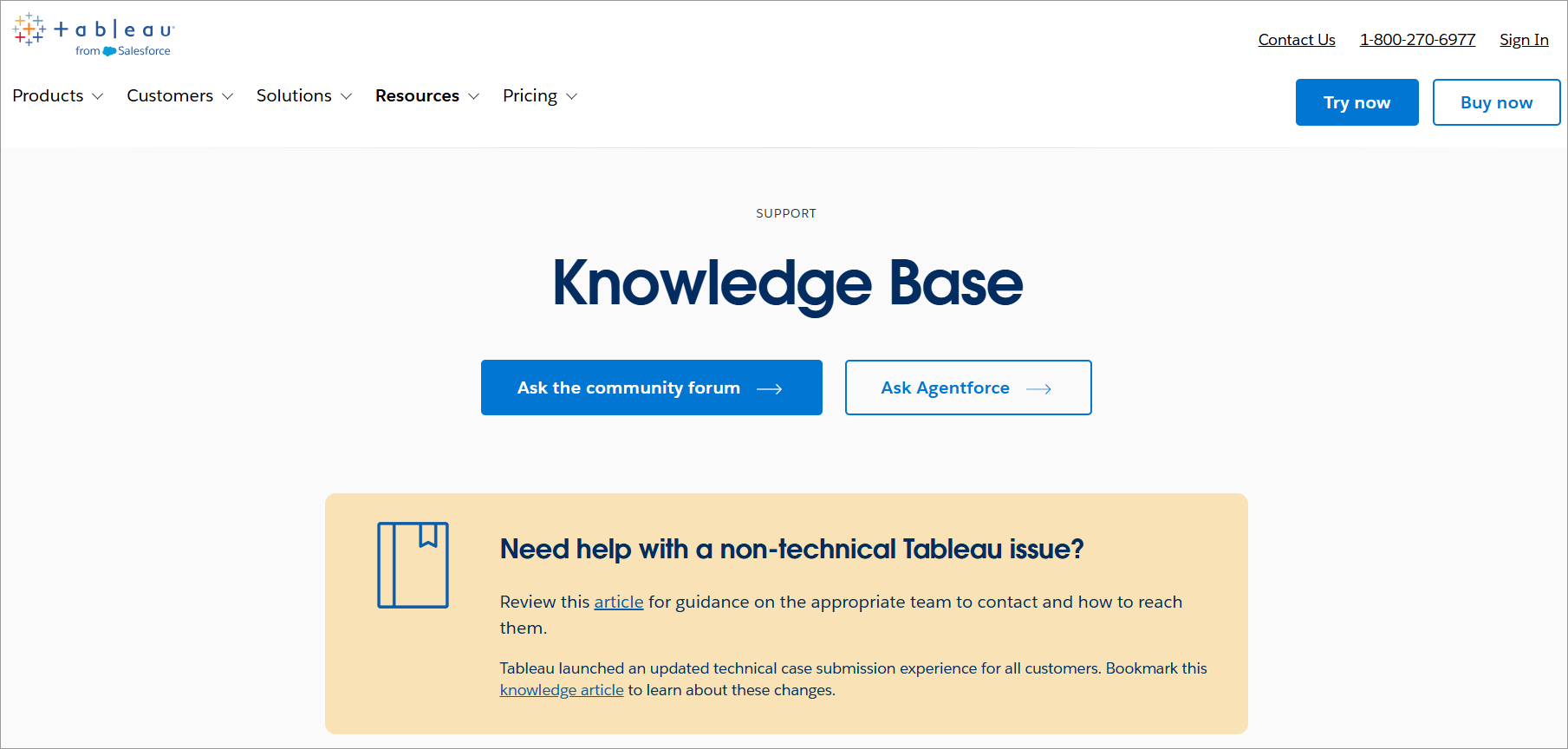
Tettra: Streamlining team collaboration and SOP management
Tettra is a knowledge management tool designed as an internal wiki for teams. It helps organizations organize SOPs, FAQs, and project documentation in a structured format.
Tettra integrates seamlessly with tools like Slack, making it easy for employees to access and share knowledge within their existing workflows. Its AI-assisted features also help keep content accurate and up to date.
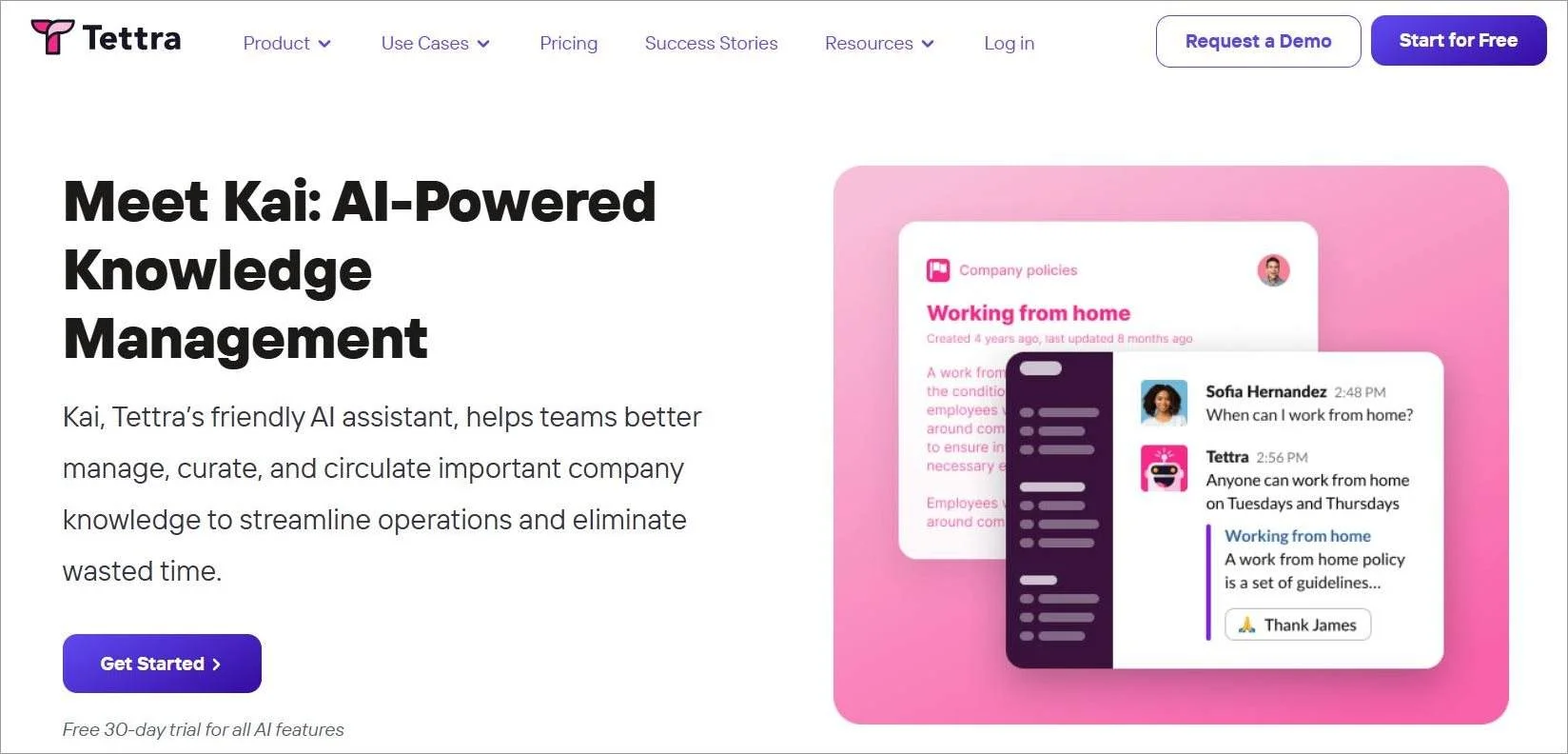
Amazon: Driving seamless e-commerce operations through knowledge management
Amazon is a global e-commerce and technology company that relies on a highly advanced internal knowledge management system to manage vast amounts of operational, product, and customer data.
It uses these systems to store product information, operational guidelines, and customer insights, enabling teams to collaborate efficiently and innovate faster. By centralizing knowledge and leveraging AI-driven insights, Amazon ensures smooth operations across its global network.
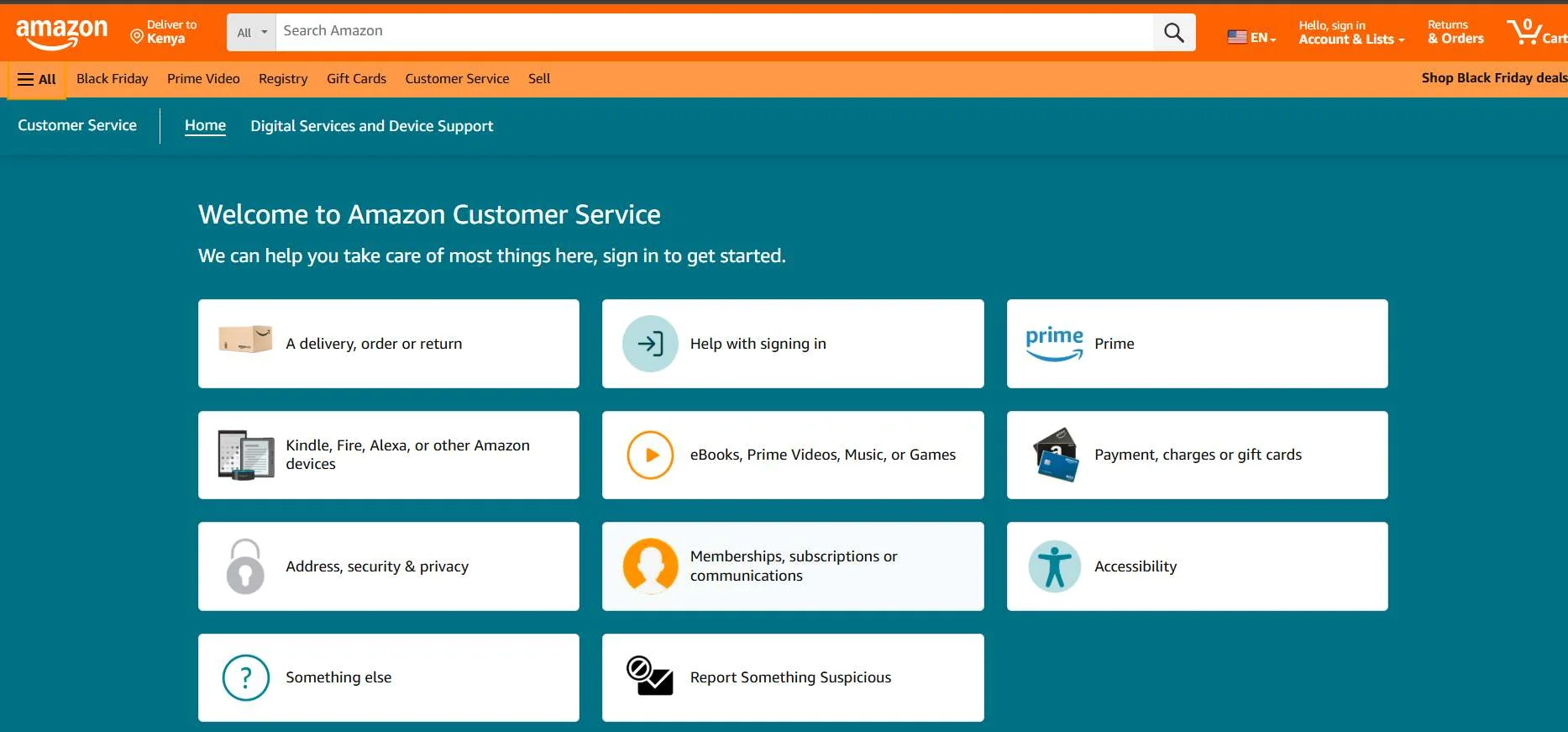
Empower your business with an effective knowledge management system
A great knowledge management system does more than store information; it empowers your customer support team to deliver exceptional service.
When your team has instant access to details about every product, service, and company policy, they can resolve issues quickly and confidently. At the same time, customers should have the freedom to find answers on their own through self-service resources.
An effective KMS keeps your entire organization informed, streamlines support operations, and creates a seamless experience that delights customers. It’s the key to turning knowledge into a competitive advantage
Looking for a smarter way to manage knowledge? BoldDesk offers powerful knowledge management features such as an internal knowledge base, article categorization, advanced search, version control, and AI-powered suggestions that help you improve customer satisfaction.
Need assistance? Contact our support team today. We’d love to hear your thoughts! Share your experiences or tips on using knowledge management systems in the comments below.
Related articles
Frequently Asked Questions
A knowledge base is a centralized repository of information for easy access, while a knowledge management system is the broader framework and tools used to create, organize, maintain, and deliver information effectively.
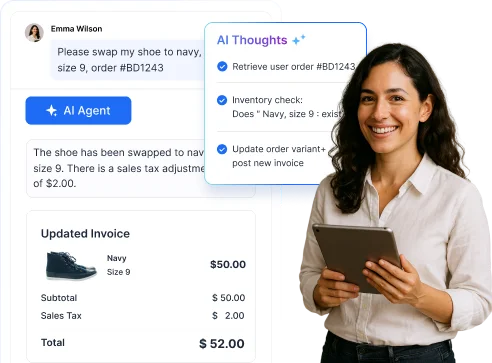


















 Email Ticketing System
Email Ticketing System Shared Inbox Software
Shared Inbox Software Multi Brand Help Desk
Multi Brand Help Desk Internal Help Desk Software
Internal Help Desk Software Trouble Ticketing Software
Trouble Ticketing Software Mobile Help Desk
Mobile Help Desk 
















